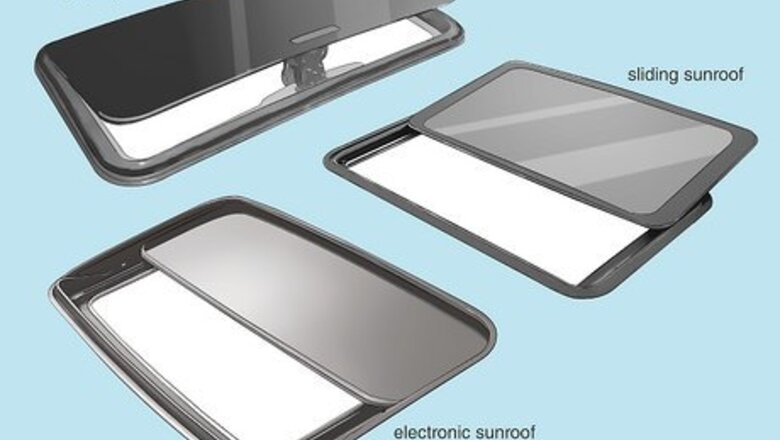
views
- Choose a sunroof kit based on your budget and needs. Possible options include pop-up sunroofs, sliding sunroofs, and electronic sunroofs.
- Use a razor blade to trace your sunroof’s template onto your roof. Then, use specialized tools such as a drill and a nibbler to cut the hole.
- Apply a primer and clear coat to the newly exposed metal. Then, apply weather sealing to the frame and install the sunroof.
Fitting a Sunroof to Your Vehicle

Choose a type of sunroof to install. There are a number of different options in aftermarket sunroofs. You will need to decide on a type of sunroof in order to establish the dimensions you want and the budget you have to work with. Pop up sunroofs are often the least expensive, while fully automatic sunroofs usually cost the most. Pop up sunroofs cannot slide open. Instead, the back of the sunroof pops up with a hinge on the front. Some sunroofs can be slide backward by hand without having to purchase an expensive electronic sunroof. Electronic sunroofs use motors to open and close and can be purchased to slide open, pop open, or both.
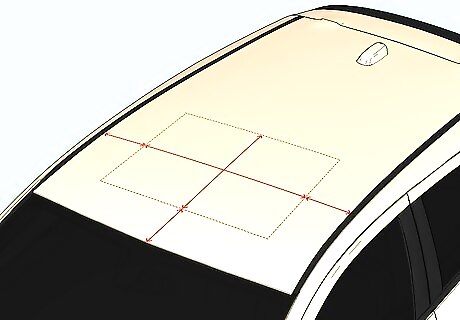
Measure the flat part of the roof of your vehicle. The size of the sunroof you can purchase depends on the amount of completely flat space on the roof of your vehicle. Measure from left to right until the roof begins to curve down towards the windows, then measure from front to back in the same manner. While it is possible to mount a sunroof that extends into the curved area of the roof, it would require custom bodywork to accomplish. Write down the dimensions of the flat area of you roof to help you choose a sunroof kit that would fit.
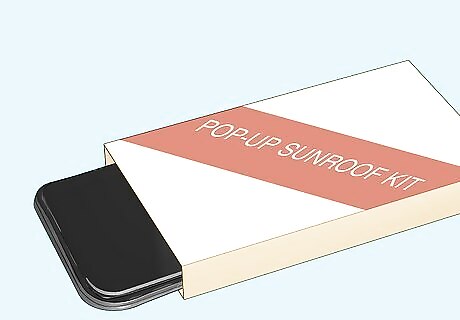
Purchase a sunroof kit that would fit on your vehicle. Armed with the maximum dimensions for a sunroof your vehicle could support, go online and find a sunroof kit that combines the type of sunroof you want with the size you need to fit on your vehicle. Choose a sunroof that is at least an inch smaller than the maximum dimensions to ensure you have no issues with fitment. You can find sunroof kits for most vehicle applications at www.Webasto.com, www.TGautomotive.com or www.summitracing.com Look for a complete kit that includes weather proofing, template, and wiring if you purchase an electronic sunroof.
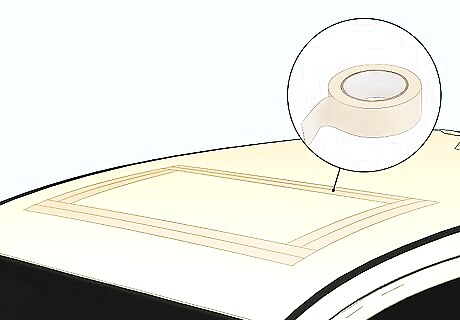
Cover the top of your roof with masking tape. Masking tape will protect the paint on your roof from being damaged as you position the sunroof template over it and begin the drilling and cutting process. The tape will keep the paint from cracking or tearing as you cut through it. This will prevent you from having to repaint the top of the vehicle upon the completion of the project. Painters tape will also work for this purpose. Do not use duct tape or any other strong adhesive tape or it may leave a residue or damage the paint when removed.
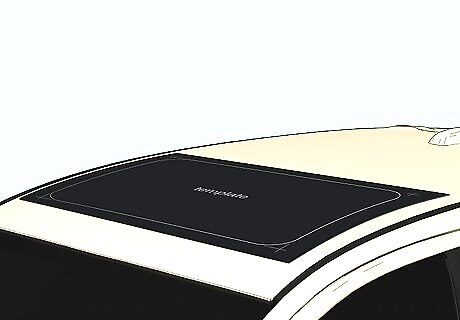
Place the sunroof template over the tape. The sunroof kit will come with a rubber template you can use to determine where exactly you want to have the sunroof positioned once installed. Center it on the roof on top of the masking tape. Measure the distance from the front, back and each side to ensure it is perfectly centered. Use a tape measure to ensure the template is equal distance from each side of the car. Depending on the size and style of your vehicle, you may want the sunroof closer to the front than the rear of the roof.
Cutting Space for Your Sunroof
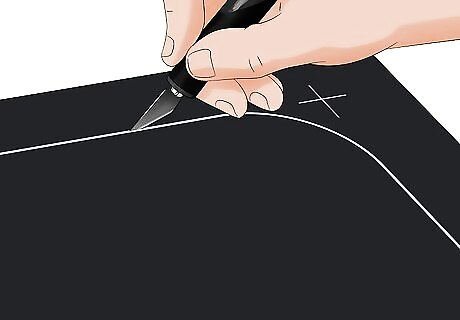
Use a razor blade to trace the template. With the rubber template in place, use a razor blade or exacto-knife to trace the template into the masking tape on your roof. Trace it slowly and carefully to ensure you create an exact outline of the template in the tape. You do not need to press the blade down hard enough to penetrate the paint through the tape. If you press through the tape into the roof, be very careful not to make any mistakes that will damage the paint that will remain after the sunroof install. Tracing with a blade instead of a pen will create a groove that will make it easier to cut along the line.

Drill four holes in the roof. Use a 4 millimeter drill bit to drill four holes into the top of the roof. Make each hole about five inches from the corner of the sunroof outline along the traced line you already cut with the razor blade. Be careful not to get the drill caught in the cloth headliner inside the vehicle. Drill these holes very careful to ensure they are on the line and not to either side of it. Remember that drilling holes through the roof is the point of no return. Once you drill the holes, the roof will leak unless you complete the installation of the sunroof.
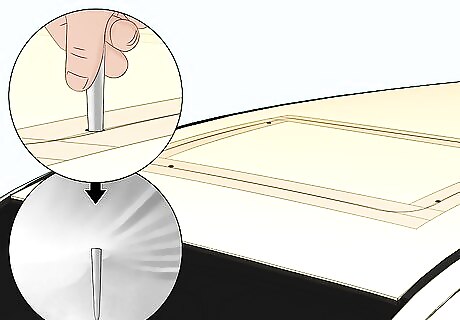
Pierce holes in the headliner using the supplied probe. The sunroof kit will come with a supplied 4 millimeter probe to use to penetrate the cloth headliner beneath the roof. Press the probe down through the drilled holes and then through the headliner. These holes will serve as your guide when cutting the headliner in the next step. If your kit did not come with a supplied probe, use a sharp object to pierce the cloth of the headliner. Be careful to pierce the headliner instead of tearing it.

Cut a hole in the headliner. Use a sharp pair of scissors or a craft knife to cut the headliner inside the vehicle, using the four holes as a guide. Be careful not to tear the headliner while doing so. Once there is a hole in the headliner, remove any sound proofing or insulation between where it was and the metal of the roof. If you tear the headliner, it will have to be replaced. You may need to use a razor blade to cut any sound proofing or insulation above the headliner as well.
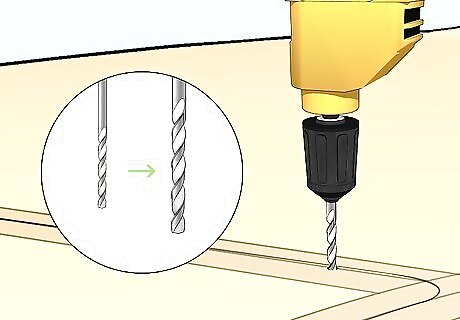
Enlarge one of the four holes in the roof with a drill. Using a larger drill bit than previously used, enlarge one of the four holes in the roof enough to fit a sheet metal nibbler tool in. You may also use a rat-tail file to enlarge the hole. Be careful to enlarge it without drilling or filing past the outside of the traced template for the sunroof, otherwise that portion will leak after the sunroof is installed. Use the nibbler tool to assess how large you will need to make the hole in order to fit it in. Do not drill or file past the traced outline of the sunroof.

Cut along the traced line with a nibbler tool. Insert the sheet metal nibbler tool into the enlarged hole in the roof, then slowly and careful cut along the traced line in the roof. Keep the blades of the nibbler precisely in the groove you created with the razor blade, but it’s okay if you cut into the center portion of the outline. Cut very slowly to ensure you stay along the traced line. The lines must be straight in order for the sunroof to mount properly. Take breaks if you need to in order to ensure you are able to continue to cut slowly and carefully.

Remove the cut out metal and clean up the edges. Once you have cut along the outline entirely, put on a pair of heavy duty gloves and remove the sheet metal that you cut out from the roof. Be very careful, as the metal may be quite sharp. Inspect the hole you cut and ensure you removed all of the metal inside the traced area. If there are any small portions of metal left inside the traced area, use the nibbler tool to trim them off now. Be very careful when trimming the edges not to cut into the roof beyond the outline.
Installing the Sunroof

Remove the masking tape and file down any rough edges. With the cutting complete, you can now remove all of the masking tape you layered onto the roof of the car. Once done, inspect the hole you cut and use a metal file to file down any jagged edges sticking out as a result of the cutting. Be careful not to damage the remaining paint with the file. File the edges until the hole’s lines are all straight and free from burrs or jagged bits of metal sticking out. Be careful not to damage the paint on the roof of the vehicle now that the masking tape is removed.
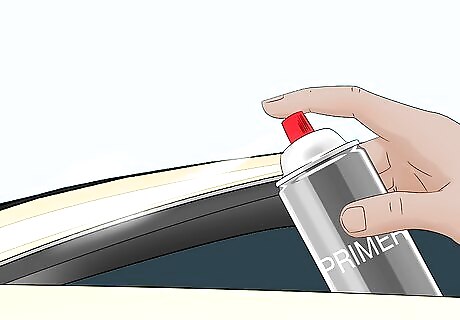
Apply primer and clear coat to the newly exposed metal. The metal surrounding the hole you cut in the roof will be susceptible to rust without any form of protection. Purchase a small bottle of primer and apply it to any visible metal in and around the hole. Allow the primer to dry completely, then do the same with the clear coat. The primer and clear coat will not be visible once the sunroof is installed, but it will prevent rust from forming beneath it. Check the label on the primer and clear coat to know how long to let each dry before moving on to the next step.
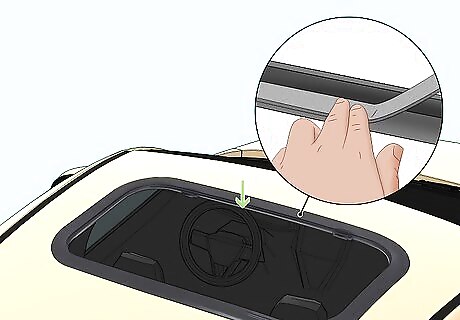
Apply weather sealing to the frame and drop it in place. Remove the weather sealing trim from the sunroof kit and put it on the sunroof frame if it does not come together. The weather seal will be adhesive, so peel the cover off of it then stick to around the perimeter of the bottom of the frame. Then place the frame into the newly cut hole in your roof, weather seal down. If the weather seal came attached to the frame, simple drop the frame into place. Be careful not to move the frame around once in place or it may damage the paint on the roof. Electronic sunroofs may contain the sunroof itself as a part of the outer frame.
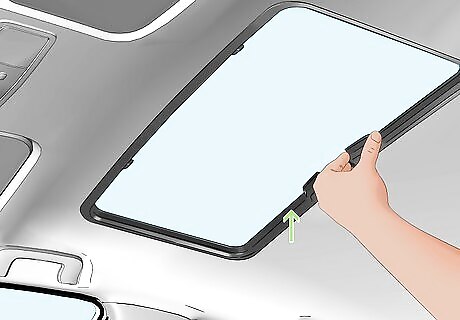
Slide the inner frame into place. From inside the car, slide the inner frame into place with the outer frame. Use the supplied screws to secure the two together. Screwing the inner and outer frames together will secure the front hinges and the rear latch on non-electronic sunroofs. If your sunroof is electronic, you will need to run the wiring from the inner frame above the headliner and into the A-pillar to reach the fuse box near the driver’s side seat. If you need to run wires above the headliner, you will likely need to remove it completely. You will need to purchase and install a new headliner. Once you’ve run the wiring down through the A-pillar of your car, wire it into the fuse box the same way you would wire in a car stereo.
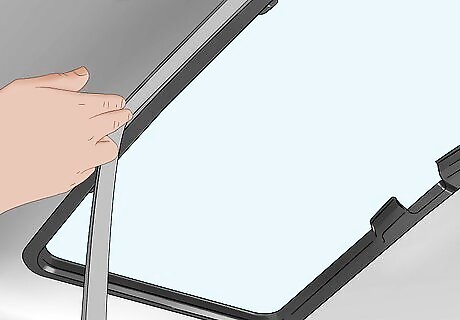
Apply adhesive to the headliner where you cut it. To make sure the headliner doesn’t hang loose around the new sunroof, you will need to glue it back into place. Apply the adhesive strips provided in the sunroof kit to the underside of the roof above the headliner, then press the headliner up into the strips. Be careful to press the headliner into the strips evenly to avoid creating wrinkles in the headliner. Be careful when applying the adhesive strips. They are not intended to be applied and removed again, so take your time. Trying to pull the headliner from the strips once it is in place will likely tear the headliner.
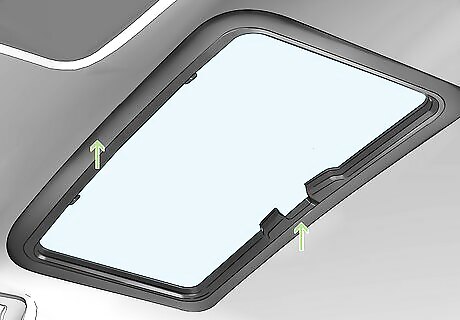
Slip the rubber finishing trim into place. Once the headliner is glued down, ensure you cut off any remaining bits of cloth that hang out and then slide the finishing trim into place over it. This finishing trim is usually applied with adhesive, but may be held in place with screws instead depending on the kit you purchase. This finishing trim does not increase the seal, but rather just makes the edges of the sunroof look good from inside the vehicle. Be careful if applying the trim with adhesive, as it is not designed to be removed again once in place.
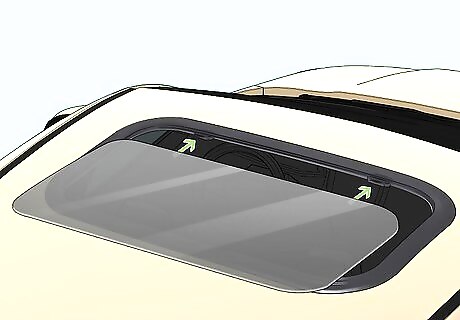
Install the glass sunroof. Place the glass sunroof vertically on the hinges at the front of the hole. Slip the hinge tags on the sunroof into the hinges on the installed frame and ensure the lip of the glass is positioned outside the lip of the seal. Keep pressure on the hinges as you lower the glass into place, closing the sunroof. Ensure the hinges stay connected and are engaged once the sunroof is in place, otherwise it will not be able to open properly. Make sure the glass fits properly in the frame and does not leave any gaps.
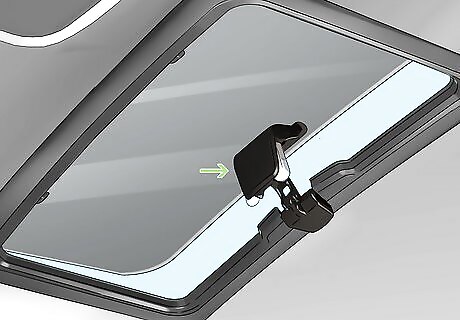
Connect the manual or electronic latches. If your sunroof is electronic, the glass sunroof itself may have been pre-installed in the outer frame when you put it in place. If it is not electronic, open the manual bracket handle and slip the sunroof toggle into it. Pivot the handle back down to close and seal the sunroof. Test a manual latch by opening it. The back of the sunroof should pop up. Start the vehicle and test the buttons on the frame to ensure electronic sunroofs are powered properly.


















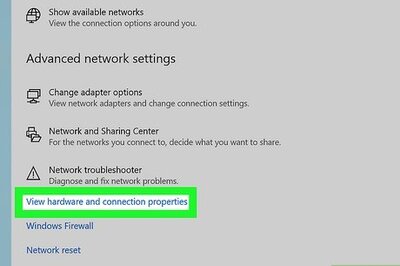

Comments
0 comment